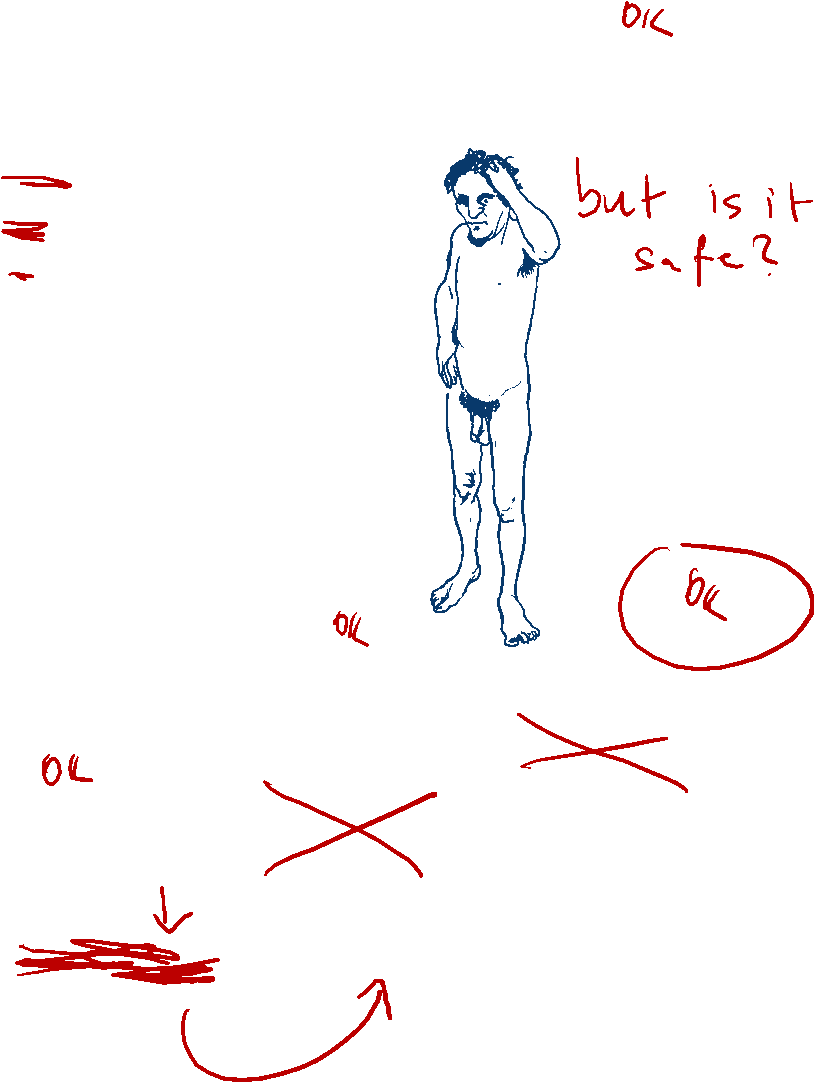What we covered here
• The latest employment snapshot from the Bureau of Labor Statistics paints a bleak picture of the current state of the economy under President Donald Trump.
• Labor market deterioration: Just 22,000 jobs were added in August, dramatically lower than economists’ expectations for 76,500 new roles.
• Negative job growth: For the first time in nearly four years, the economy lost jobs, with a decline of 13,000 positions in June.
• Rising unemployment: The jobless rate rose to 4.3%, the highest level since 2021.
• Stagnation: The data underscores the extent to which consumers and businesses are struggling to accommodate the weight of tariffs, stubborn inflation, the decline in America’s crucial immigrant workforce and overall economic uncertainty.
Our live coverage of the August jobs report has ended. Read more here.
Dollar drops on signs of slowing economy, rate cut expectations

The US dollar broadly weakened on Friday after a softer-than-expected jobs report stoked concerns about a labor market slowdown.
The dollar index, which measures the dollar’s strength against six major foreign currencies, dropped 0.7% and hit its lowest level in over a month.
The dollar weakened on signs of a slowdown and expectations for the Federal Reserve to lower interest rates. Fed rate cuts can lower Treasury yields, making the bonds relatively less appealing for global investors and leading to less demand for dollars.
“Another soft nonfarm payrolls report has put the dollar on the back foot again,” Jonas Goltermann, deputy chief markets economist at Capital Economics, said in a note.
Although the dollar fell, Goltermann said he expects it to rebound because US economic growth, as measured by gross domestic product, is still relatively robust, and expectations for lower rates in other major economies could limit the dollar’s decline.
The dollar index is down almost 10% this year. The weaker dollar has also been a boon for gold. The yellow metal is priced in dollars, so a weaker dollar makes it relatively cheaper for global investors, boosting demand. Gold prices on Friday rose roughly 1.4% and hit an all-time high.
Youth unemployment climbs to 10.5%, double the national rate

Younger Americans seeking work are facing trouble getting hired in today’s job market.
The unemployment rate for 16-to-24-year-olds climbed in August to 10.5%, according to the Bureau of Labor Statistics.
That’s the highest level in nearly four years and a significant increase from 9% as recently as January.
The youth unemployment rate is more than twice as high as the national unemployment rate.
The findings underscore how there are fewer opportunities for younger workers.
The jobless rate is slightly higher, at 10.8%, for high school graduates aged 20 to 24 without college experience. That’s up sharply from 8.8% in July.
Even recent college graduates are having serious trouble landing a job these days. Some members of the Class of 2024 say they applied to hundreds of jobs without success – and some economists suspect artificial intelligence may be playing a role.
The unemployment rate for those aged 20 to 24 years old with a bachelor’s degree and higher climbed to 9.3% in August, up from 8.6% in July and 4.2% in April.
“The ‘low hiring, low firing’ environment has disproportionately hit the younger cohort of new college grads,” Kevin Gordon, senior investment strategist at Charles Schwab, told CNN. “We’re now likely seeing the impact of AI on this cohort, especially as companies start turning to technology to save on costs.”
Trump's pick to lead the BLS floated suspending monthly job reports. Here's why that could backfire

E.J. Antoni, President Donald Trump’s pick to lead the Bureau of Labor Statistics after he fired the prior BLS commissioner following last month’s dismal jobs report, recently floated temporarily suspending monthly job reports.
Instead, Antoni, who does not have any official sway at the BLS while awaiting Senate confirmation, advocated for publishing quarterly job reports until fixes are implemented to ensure the government-produced data is more accurate.
Even though data included in monthly job reports, namely the headline employment number, gets revised several times, it still is an essential window into the state of the labor market. Without a monthly report, Federal Reserve officials, for instance, would likely have a much harder time deciding where interest rates should be.
It could lead to a scenario where they think hiring rates are much higher, leading them to believe it’s unnecessary to lower rates. But, in reality, hiring rates could be much lower and could have been somewhat higher, had they cut sooner.
It would also mean a lack of data to support one half of its dual mandate (price stability and full employment), which, in turn, would send shockwaves through financial markets and thoroughly disrupt businesses’ abilities to plan.
However, Antoni, if confirmed, and White House officials, said that monthly job reports would continue getting published.
Read more here.
Here's how Wall Street is reacting to the jobs report

Friday’s job report was a signal the economy is weakening, investors say, spurring a rally in Treasury bonds and gold while stocks and the dollar fell.
Here’s what Wall Street is saying:
Bank of America revised its expectations for the Federal Reserve to cut interest rates. The bank now expects a quarter-point cut in September and December, after previously forecasting zero cuts this year.
“The August jobs report is likely to amplify the Fed’s concerns about labor market weakness,” Aditya Bhave, senior US economist at Bank of America, said in a note. “The shift in our view is motivated by both the softer labor data and [Fed Chair Jerome] Powell’s reaction function, as stated at Jackson Hole.”
Krishna Guha, vice chairman at Evercore ISI, said in a note that a September rate cut is now a lock, and the soft labor data raises the likelihood of an October rate cut “a bit above 50-50 for the first time.”
“The underlying details within the report showed broad-based weakness, with a continued lack of breadth in industries seeing positive payroll gains,” Guha said.
Thomas Simons, chief US economist at Jefferies, said the report confirms his call for quarter-point cuts in September, October and December.
At investment firm BTIG, Jonathan Krinsky, chief market technician, said a September rate cut is “locked,” but cautioned against overoptimism from investors who are eager for rate cuts.
“When you are rooting for weaker data to support rate cuts, it’s a fine line and sometimes it’s a function of ‘careful what you wish for,’” Krinsky said.
The Dow was down 290 points, or 0.64%, as of 12:35 p.m. ET. The S&P 500 fell 0.55% and the Nasdaq was down 0.3%.
Immigration shifts remain a blind spot in jobs data

Friday’s jobs report generates more questions than answers about the US economy; however, one of the biggest blind spots in labor market data is how the immigration landscape is changing.
“The Current Population Survey, which underlies the unemployment rate, is not designed to take up sudden changes in population, including changes to immigration policy,” Daniel Zhao, chief economist at employment website Glassdoor, told CNN in an interview Friday. “We’re in the dark a bit there.”
(The Current Population Survey of households is one of two surveys that compose the monthly jobs report. The other, of businesses, is where the headline payroll gains, wage and industry information are from).
Because of how the jobs report is structured, it’s impossible to attribute the employment gains to any particular demographic.
However, on Friday, White House National Economic Council Director Kevin Hassett appeared to blame the weak job gains changing immigration dynamics.
“All the job creation in the US has come from native-born workers, whereas in the Biden administration, it would be like maybe about half was foreign born,” Hassett said, repeating a frequent unsubstantiated claim from the Trump administration.
The foreign-born labor force has declined somewhat after peaking earlier this year, BLS data shows. However, the drop-off can be attributed to people refusing to answer surveys or not indicating their nativity status, economists note.
The employment-to-population ratio for foreign-born workers was 63.5% in August, up slightly from July. For native-born workers, that ratio dipped to 58.8% from 59.1.
The labor market appears to be weakening rapidly. Here’s everything we learned today

Economists were already expecting an unimpressive set of data for the August jobs report. The actual numbers came in far worse:
- Just 22,000 jobs were added in August, compared to expectations for 76,500 new roles.
- June’s job total was negative, shedding 13,000 positions and marking the first time since the pandemic that the economy actually lost jobs.
- The unemployment rate rose to 4.3%, its highest level since 2021, meaning 7.4 million Americans are without work.
- Manufacturing jobs, a key focus of President Donald Trump’s economic agenda, fell for the fourth month in a row for a total of 78,000 lost jobs so far this year.
- Black unemployment climbed to 7.5%, the highest level in almost four years.
The only potential good news for Trump is that the Fed may finally opt to slash its interest rate — but to support the economy, not to please the president.
Why stocks suddenly turned red

A brief rally evaporated Friday morning as investors digested August jobs data that depicted a slowing labor market.
Stocks initially rose after the weaker-than-expected jobs report, as traders ramped up bets that the Federal Reserve will cut interest rates this fall.
But the gains were short-lived as Wall Street reckoned with the prospect of a weakening economy. Initial excitement about rate cuts was dampened by the realization that the Fed needing to step in is a sign the economy isn’t necessarily doing well.
This reaction to the downside is more logical than the initial cheer, Art Hogan, chief market strategist at B. Riley Wealth Management, told CNN.
“Do we want the Fed to cut? Yes,” Hogan said. “But do we want the Fed to need to cut? No, that’s bad news for the economy and market.”
“Celebrating the Fed coming to the rescue is like celebrating the ambulance coming to your house really fast – until you realize why you needed an ambulance in the first place,” Hogan said.
The Dow was down 400 points, or 0.88%, as of 11:10 a.m. ET. The S&P 500 fell 0.86% and the Nasdaq fell 0.76%.
Stocks start to slide as investors digest jobs report

US stocks moved into the red Friday morning, with the Dow, S&P 500 and Nasdaq all erasing earlier gains.
The Dow fell 359 points, or 0.79%. The S&P 500 fell 0.7% and the tech-heavy Nasdaq fell 0.56%.
While stocks had opened higher, confidence wavered as investors digested the prospect of a weakening economy and also grappled with news from the crucial tech sector.
Nvidia (NVDA) fell 4.1%, weighing on markets. Shares of the chipmaker were under pressure after the Financial Times reported that OpenAI is set to partner with Broadcom (AVGO) to produce its own artificial intelligence chips. Broadcom shares were up 10%.
Shares in just under half of the companies in the S&P 500 were lower. More than two thirds of the companies in the Dow were lower.
Elsewhere, Lululemon (LULU) sank 17% after the company lowered its earnings outlook, citing the impact of tariffs.
The sentiment driving markets dipped from “greed” into “neutral,” according to CNN’s Fear and Greed index.
Why the unemployment rate went up
In recent months, the unemployment rate has remained low for a not-entirely-ideal reason: The labor force was shrinking.
But in August, the jobless rate moved higher — in part because more people re-entered the labor force looking for work, BLS data showed.
The labor force, which shrank for three months in a row, increased by 436,000 people in August, BLS’ latest household survey data shows.
The labor force participation rate moved higher as well, ticking up to 62.3% from 62.2%.
While the majority of those labor force gains were from those classified as employed, the increase in those unemployed was largely attributed to those who re-entered the labor market and are searching for jobs.
“In fact, the median time looking for work slipped to a three-month low, a bright spot in a generally weak jobs report,” Jennifer Timmerman, senior investment strategy analyst at Wells Fargo Investment Institute, wrote in a note to investors Friday.
‘Paralyzed’ manufacturers keep shedding jobs despite tariffs

President Donald Trump is on a mission to make American manufacturing jobs great again by deploying historically high tariffs on imports.
That effort is off to a slow start, at best, and at worst is backfiring by causing job loss.
US manufacturers shed another 12,000 jobs in August, according to the Bureau of Labor Statistics.
That marks the fourth consecutive month of job loss for US manufacturers. The industry has slashed 42,000 jobs since April, when Trump shocked investors with massive tariffs that he later paused and dialed back.
While it’s far too early to deliver a verdict on Trump’s use of tariffs to reshore manufacturing jobs, economists say the chaotic nature of trade policy to date is undermining his efforts.
“What we’re seeing is a sector paralyzed by uncertainty,” Matthew Martin, senior US economist at Oxford Economics, told CNN on Friday.
Faced with immense uncertainty on where tariffs will settle, some manufacturers are laying off workers. Others are struggling from higher costs caused by Trump tariffs on key inputs including steel, aluminum and copper.
Surveys of manufacturers reveal frustration over the volatile trade policy.
“Tariff Bingo is tough,” one furniture manufacturer told the Federal Reserve Bank of Dallas in a survey released last week. “We are probably going out of business within 90 days.”
A transportation equipment manufacturing executive said the current environment in the industry is much worse” than the Great Recession of 2007 to 2009.
“There is absolutely no activity in the transportation equipment industry. This is 100% attributable to current tariff policy and the uncertainty it has created,” the executive told the Institute for Supply Management.
Trump's first jobs report comments appears to blame Fed Chair Powell
Appearing to react to Friday’s underwhelming jobs report, President Donald Trump took a pointed swipe at Federal Reserve Chair Jerome Powell for keeping interest rates high.
“Jerome ‘Too Late’ Powell should have lowered rates long ago. As usual, he’s ‘Too Late!’” Trump wrote in a Truth Social post.
The president’s comment comes shortly after the Bureau of Labor Statistics reported that the economy added just 22,000 jobs last month and the unemployment rate rose to 4.3% from 4.2%.
August’s job report also included a downward revision to June, which showed the US economy lost 13,000 jobs that month. It’s the first negative employment month since December 2020, and brings to an end what was the second-longest period of employment expansion on record.
Lutnick: "You're going to see employment numbers you'd never imagine"

The US economy is in a hiring slump, but Commerce Secretary Howard Lutnick on Friday signaled an optimistic note on America’s job market.
“A year from today, you’re going to see employment numbers you’d never imagine,” Lutnick told CNBC Friday just before the jobs report was released.
Lutnick said tariffs will incentivize manufacturing job growth (the industry has lost jobs for four straight months), and the administration will train people to take on new jobs that tariffs will create in the United States.
“What it’s going to do is it’s going to take the 6.9 million Americans who are capable of working who are sitting on the sidelines now because they just haven’t had the jobs they were looking for, they’re going to come into the workplace,” Lutnick said. “We’re going to train 5 million Americans for these jobs.”
Lutnick said the primary factor for the jobs slump is high interest rates. The Fed has kept rates high because it feared tariffs could boost prices, and job growth had until recently remained robust.
“We’re going to see employment numbers that you’ve never imagined if only, and what would help it, is if finally, [Federal Reserve Chair] Jerome Powell does his job and lowers rates,” Lutnick said. “It is outrageous that the Fed keeps its rates this high. It’s absurd, actually.”
Kevin Hassett concedes jobs numbers were a "disappointment"

National Economic Council Director Kevin Hassett conceded Friday the jobs numbers were a “bit of a disappointment” but said he expects that later revisions will show more jobs were added.
“This jobs number was certainly a little bit of a disappointment right now,” Hassett said on CNBC. “There was a Goldman Sachs study that came out yesterday that showed that — because the [Bureau of Labor Statistics] hasn’t really done a good job on its seasonal adjustment in August — that they tend to revise this number up by almost 70,000 jobs when they give you a revised number a month later.”
“It’s a little bit of a disappointing job number, but I pretty much expect it’s going to revise up,” Hassett added.
When the BLS issued a disappointing jobs report for July, including sharp revisions for May and June, Trump fired Commissioner Erika McEntarfer, saying without evidence that the numbers were “RIGGED.”
Hassett said officials are looking at the “capital spending boom” and high industrial production as indicators that “the economy is sound and inflation is low.”
“We’re really cruising into, I think, the kind of capital spending boom we had last time, the last time that we had the big corporate reform,” Hassett said. “Against that backdrop, that’s exactly what you want to see, in terms of, you got supply side driven growth, so therefore you’re not putting inflationary pressure on, as well.”
Wage gains are shrinking, too
Job growth and opportunities are cooling for US workers. So are paycheck gains.
The annual growth in average hourly earnings was 3.7% in August, a slowing from 3.9% the month before. While the deceleration can be partly attributed to “base effects” (year-over-year comparisons), they’re also a symbol of a broader shift occurring in the labor market, noted economist Lydia Boussour.
“Employers’ continued focus on wage containment amid a slowing economy may lead to a further deceleration in wage growth toward 3.5% by the fall,” Boussour, EY-Parthenon senior economist, wrote in a note Friday to investors.
And with inflation heating back up, workers’ paychecks are not going as far as they recently did, according to the most recently available data.
Through July, real (inflation-adjusted) average hourly wages were up 1.2%, BLS data shows.
Trump’s labor secretary blames Powell for jobs report, says numbers "underperformed just a bit"

Labor Secretary Lori Chavez-DeRemer denied that tariffs have anything to do with the weak jobs numbers Friday, laying blame on Federal Reserve Chair Jerome Powell for refusing to bend to President Donald Trump’s pressure to lower interest rates.
“Jerome Powell should be embarrassed by this report, because he has not done his job,” Chavez-DeRemer said on Fox Business.
Pressed if she’s even a little disappointed by the numbers, Chavez-DeRemer conceded slightly, but said the Trump administration is in a net positive with jobs numbers.
“Well, 22,000 jobs underperformed just a bit, but it’s still in the positive, almost a half a million jobs have been created since the president took office,” she said.
“It’s going to take some time, but again, when everybody is working for the American people and the American worker, and somebody chooses not to, and they’re instrumental in those decisions that affect the market, that affect the wage growth, that affect all of those things, do your job,” Chavez-DeRemer added, referring to Powell.
Asked if tariffs have anything to do with the slowing job market, Chavez -DeRemer said, “Tariffs are working.”
“How do I know this? Because companies are reinvesting in the American workforce. We’re seeing the consumer confidence up. We’re seeing real wages up year over year, almost 4% real wages are up,” she said.
Chavez-DeRemer’s statistics are not correct. Over the past year, through July, real (inflation-adjusted) average hourly earnings were up 1.2%. Through August, average hourly wage growth, not adjusted for inflation, was up 3.7%, a slowing from the 3.9% rate in July.
Stocks rise, bonds rally after weaker-than-expected jobs report reaffirms rate cut hopes

US stocks opened higher on Friday after August jobs data came in softer than expected, boosting expectations that the Federal Reserve will cut interest rates in September to stimulate the economy.
Investors are eager for rate cuts: The Dow rose 119 points, or 0.26%. The S&P 500 rose 0.41% and the tech-heavy Nasdaq gained 0.63%.
Treasury bonds rallied as investors flocked to safe assets due to signs of an economic slowdown. Investors also recalibrated their expectations for the Fed’s rate-cutting cycle and snapped up bonds to lock in current high rates.
Bond prices and yields trade in opposite directions. As bonds rallied, yields fell. The two-year Treasury yield, which is sensitive to Fed rate cut expectations, dropped sharply to 3.47%, its lowest level since 2022.
Traders ramped up bets on the depth of the Fed’s potential rate cuts. Traders are now pricing in a 12% chance of a jumbo half-point cut in September, compared to a 0% chance yesterday.
The US dollar index sank 0.75% on signs of a slowdown and future rate cuts. Gold prices jumped 0.9% and hit a fresh record high.
Several industries lost jobs last month

There were more industries that lost jobs last month than those that gained, according to the government’s latest tally.
US employers overall added just 22,000 jobs in August, the Bureau of Labor Statistics said Friday, reflecting one of the weakest three-month streaks of job growth since the Great Recession. But some industries are faring even worse.
In August, the professional and business services sector lost 17,000 jobs, the most of any industry. That wide-ranging industry — encompassing roles such as accountants and engineers — has lost jobs throughout the year.
There were eight other industries that lost jobs last month, such as government, which shrank by 16,000; and manufacturing, which shed 12,000 jobs.
In contrast, there were only five sectors that gained jobs last month.
The biggest job gains were in the private education and health services sector, which added 46,000 jobs in August. As usual, those gains were driven by the health care industry, which added 31,000, “below the average monthly gain of 42,000 over the prior 12 months,” the BLS said in a release.
What this all means for the Fed

With signs of America’s job market continuing to weaken, investors are expecting the Federal Reserve to lower interest rates at each of its three meetings the rest of the year.
After the Friday jobs report was released, the CME Group’s FedWatch Tool showed an 87.8% probability that the Fed will reduce its benchmark rate by a quarter point at its September 16-17 meeting. The central bank has held steady since December.
But now there’s also a 12.2% chance of a jumbo half-point cut this month.
The odds of further rate cuts the rest of the year also went up.
Investors now see a 70.5% probability of a quarter-point cut in October, according to the FedWatch Tool, up from 53.6% on Thursday. For the Fed’s December meeting, investors see a 67.2% chance of another quarter-point cut, compared with 45.8% yesterday.
The unemployment rate just ticked up
Friday’s jobs report painted a miserable picture of the labor market in practically every metric.
In addition to the weaker-than-expected monthly total of 22,000 jobs added last month and the revised June figures showing the economy shed jobs for the first time in five years, the unemployment rate ticked up to 4.3% from 4.2%.
That’s the highest the unemployment rate has been since October 2021.






